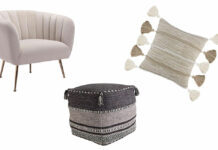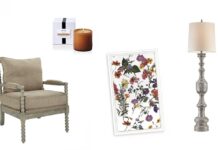Choosing the right color palette for your home is an exciting yet daunting task. The colors you select can significantly impact the overall look and feel of your living space, setting the tone for your decor and influencing the ambiance of each room. With so many options available, it’s essential to approach the process thoughtfully and strategically to create a cohesive and harmonious color scheme that reflects your personal style and enhances the beauty of your home.
1. Consider Your Style and Preferences
Start by considering your personal style and preferences when selecting a color palette for your home. Are you drawn to bold, vibrant colors, or do you prefer soft, muted tones? Do you favor modern, minimalist designs, or are you more inclined to lean toward a traditional, classic aesthetics? Understanding your unique tastes and preferences will guide you in choosing colors that resonate with you and create a space that feels like home.
2. Gather Inspiration
Gather inspiration from various sources to help you narrow down your color choices and envision the look you want to achieve. Browse home decor magazines, websites, and social media platforms like Pinterest and Instagram for inspirational photos and color palettes that catch your eye. Pay attention to colors that evoke a sense of calm, warmth, or energy, and consider how they might complement your existing furnishings and decor.
3. Consider the Mood and Function of Each Room
Think about the mood and function of each room when selecting colors for your home. For example, soft, soothing hues like pale blues and greens are ideal for creating a relaxing atmosphere in bedrooms and bathrooms, while vibrant, energizing colors like yellow and orange are well-suited for lively, social spaces like the kitchen or dining room. Consider the activities that will take place in each room and choose colors that enhance the desired ambiance.
4. Test Paint Samples
Before committing to a color scheme, test paint samples to see how they look in different lighting conditions and against your existing furnishings and decor. Paint small swatches of each color on the walls and observe how they appear throughout the day, from morning light to evening shadows. Take note of how the colors interact with natural and artificial light and how they complement or clash with other elements in the room.
5. Stick to a Cohesive Color Scheme
Maintain cohesion and flow throughout your home by sticking to a cohesive color scheme that ties the various rooms together. Choose a primary color palette consisting of two to three main colors and use variations of these hues throughout your home to create a sense of unity and harmony. Consider factors such as continuity of flooring, trim, and architectural details when selecting colors to ensure a seamless transition from room to room.
6. Balance Warm and Cool Tones
Create visual interest and balance in your color palette by incorporating a mix of warm and cool tones. Warm colors like reds, oranges, and yellows add coziness and vitality to a space, while cool colors like blues, greens, and purples evoke a sense of calm and serenity. Strike a balance between warm and cool tones to create a dynamic and inviting atmosphere that appeals to the senses.
7. Don’t Forget About Neutrals
Neutrals play a crucial role in any color palette, serving as a backdrop that anchors the room and allows other colors to shine. Incorporate neutral tones like whites, grays, and beiges as a base for your color scheme, using them on walls, ceilings, and larger furnishings to create a sense of balance and versatility. Neutrals also provide a timeless foundation that can easily be updated with accent colors and accessories as trends change.
8. Consider the Exterior of Your Home
When choosing a color palette for your home’s interior, consider the exterior of your home as well. Select colors that complement the architectural style, materials, and surroundings of your home’s exterior to create a cohesive and harmonious look both inside and out. Take cues from your home’s exterior color palette when choosing interior colors to ensure a seamless transition between indoor and outdoor spaces.
If you’re feeling overwhelmed or unsure about selecting a color palette for your home, don’t hesitate to seek professional advice. Interior designers and color consultants can offer valuable insights, expertise, and guidance to help you choose colors that reflect your style, enhance your home’s architecture, and create a cohesive and inviting atmosphere.











